Review: Motorola G4 and G4 Plus -- Unlocked
Jul 14, 2016, 2:15 PM by Eric M. Zeman
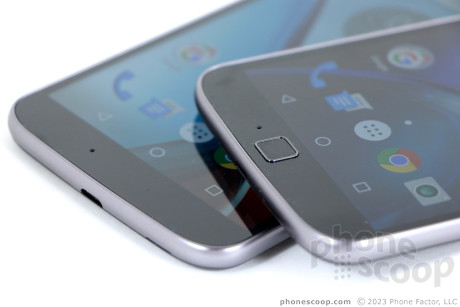
Motorola's middleweight smartphones are back for another round. The Moto G4 and Moto G4 Plus share most features, but the Plus adds a little something extra. These devices run a near stock version of Android and enjoy some welcome enhancements from Motorola. Here is Phonescoop's in-depth review of Moto's latest mid-range handsets.
Is It Your Type?
Lenovo's mid-range, fourth-generation Moto G and G Plus are intended for those who prefer unlocked handsets that don't cost a whole lot. If you're looking for a big phone that runs stock Android and offers a small degree of customization, the Moto G4 and G4 Plus are worth consideration.
Body
The fourth generation Moto G (G4) is a departure from the previous three models in many ways. The G series falls in between the entry-level Moto E and high-end Moto X smartphones, and has always been an excellent value. In fact, the first three Moto G versions have been among my top recommendations the past few years for affordable Android handsets. That changes somewhat with the Moto G4.
To start, the G4 is significantly bigger than its predecessors (6.02 x 3.02 inches compared to 5.59 x 2.85 inches). Lenovo bumped the screen size from 5 inches to 5.5 inches and had no choice but to increase the phone's dimensions. Amazingly, the G3 and G4 weigh the same at 5.47 ounces. Where the first three generations were a good size for most people, the G4 is a phablet and may be too big for some. (The G4 Play, due later this summer, is a bit smaller with its 5-inch screen.)
The design has a bit less personality. The G has always had a somewhat plain face but a curvy backside that helped the phone sit deeper in your palm. The G4's face is even more plain (something I didn't think was possible) and the rear has been flattened out in favor of a more cookie cutter shape. BO-RING. What we're seeing here is the Lenovo-ing of Motorola's industrial design and I don't like it one bit.
In the plus column, consumers may still customize their Moto G4 by selecting either a white or black front; one of eight rear panel colors (bright blue, teal, pink, white, black, navy blue, dark purple, or lava); and one of five accents (gray, silver, pink, blue, gold). Using the Moto Maker web site to design your own G4 is as simple as ever, and is the only way to inject some life into this otherwise buttoned-down design.
The phone feels decent to hold. The front is glass, the frame is polycarbonate, and the rear shell is made of textured resin. If definitely comes across as plastic-y. The flat shape makes it difficult to reach your hand all the way around the phone. It's probably pushing the limit of what tight jeans can manage, but it swam in the pockets of loose cargo shorts with ease. Build quality is good enough for this class of device. The phone is fitted together well.
The screen takes up most of the front face. I appreciate that the display disappears into the black glass when off. The polycarbonate frame forms a very thin rim around the outer edge of the glass, helping protect it when placed face down. The user-facing camera is plainly visible next to the earpiece. There are no buttons, capacitive or otherwise, adorning the front.
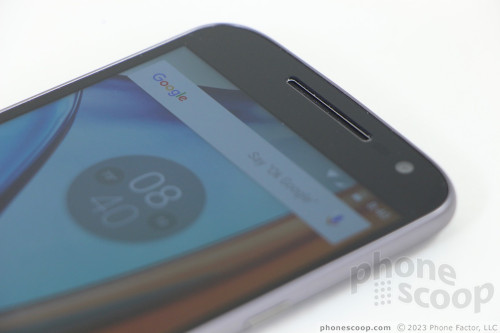
The only obvious physical difference between the G4 and G4 Plus is the addition of a small fingerprint reader to the Plus variant. The reader has a rather annoying and uncomfortable rim protecting it. Further, the surface of the reader is sunk in a bit, which means you have to really mash your thumb into it for the reader to work properly. The fingerprint reader does not double as a home button. This drove me crazy after about 5 minutes.
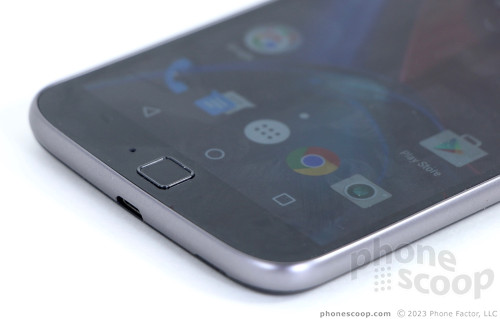
Lenovo stuck the volume toggle and screen lock button on the right edge of the phone. Both buttons are easy to find thanks to their sharp profiles. I don't care for travel and feedback that much. The volume toggle is okay I guess, but the screen lock button is rather sticky. The headphone jack is on top, while the micro USB port is on the bottom. There are no buttons or hatches on the left side, and the G4 does not have a dedicated camera button.
I like the feel of the resin rear panel, which is similar to soft-touch paint. It lends some grip to the phone, helping it stay in your grasp. The G4 has the now-standard indentation on the back with Motorola's stylized "M" logo painted in chrome. The elongated, oval-shaped camera module sticks out from the rear surface quite a bit.
The G4's rear panel comes off easily, revealing only two card slots. The battery is not removable, nor even visible. Separate slots for the SIM card and memory card are carved into the left edge. You can hot swap both, which is something I appreciate.
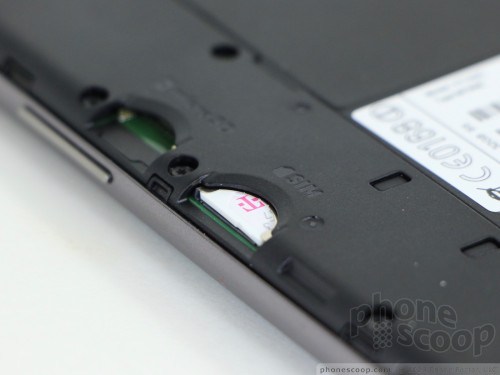
I wish the Moto G4 and G4 Plus had the personality of earlier versions of this phone, but there's nothing inherently wrong with the refreshed design. The hardware is perfectly acceptable for a $200 phone.
Screen
The G2 and G3 each had 5-inch 720p displays that were just fine for their price point. The G4 steps up to a 5.5-inch screen with 1080p HD resolution. It's a great display. The resolution is dense enough that individual pixels are invisible; everything on the screen is razor sharp. The display throws off plenty of light. I was able to use the G4 indoors and out no problem, though it needs to be set to max brightness outdoors. (The auto-brightness function is really, really fussy.) With no blue shift or brightness drop, viewing angles are excellent. It's a fine display for a mid-range phone.
Signal
The phone has very good support for the LTE networks of all major U.S. carriers (Bands 1 / 2 / 3 / 4 / 5 / 7 / 8 / 12 / 13 / 25 / 26 / 41) and that bore out in our testing. We tested the G4 with AT&T, T-Mobile, and Verizon.
The G4 walks right down the middle when it comes to performance on the nation's three largest networks. The phone was always connected and never dropped the network no matter how weak the coverage from AT&T, T-Mo, or Verizon. I was able to connect calls in known weak spots without issue. The G4 did drop a few calls when on AT&T's and Verizon's networks, but didn't drop calls on T-Mobile.
Data performance was comparable between the the three. T-Mobile posted the fastest peak speeds, but good speeds were more consistent from AT&T and Verizon. No matter the network, the G4 was adept at streaming YouTube and Spotify, and keeping up with my Instagram, Facebook, and Twitter feeds. The phone never felt slow or bogged down by the network.
Sound
The G4 is a solid voice phone. The earpiece produces loud, if somewhat harsh, voices that are easy to hear almost anywhere. The volume is there in spades at the cost of clarity. Calls were prone to distortion when set all the way up. The good news is you'll be able to hear calls at lower volumes with better clarity. Voice tones were bright in the earpiece, and those I spoke to through the G4 said I my voice sounded "very good."
The speakerphone can bet set to incredible volumes. You can easily fill a moderate room with your conversation if you wish. The speakerphone works very well in the car, at home, in the office, around town, and so on. Moreover, the speakerphone is less prone to distortion so calls are clearer than they are through the earpiece.
Notifications are very, very loud, but the vibrate alert is too subtle and could lead to missed calls if you've stashed the G4 in a purse or backpack.
Battery
Along with the bigger screen, the G4 and G4 Plus have a bigger battery, too. It jumps from the 2,470 mAh power cell in last year's phone to 3,000 mAh. That's a huge upgrade. After testing the phones over the course of a week on three different networks, I feel confident in saying the Moto G4 should get everyone through a full day of average use with enough power to last through the night and halfway into the following day. Even under heavy use, the battery delivered a full day with some power to spare.
Lenovo says the G4's battery supports Quick Charge 2.0, which can push 6 hours worth of uptime into the phone in just 15 minutes. I'd say this claim is accurate.
If you somehow do find yourself in trouble, the G4 has the system-level battery saver tool. You can use this to dial back the phone's performance in order to extend battery life. I doubt you'll ever need it.
Bluetooth, GPS, NFC, WiFi
Lenovo did a fine job with the Moto G4's ancillary radio systems. Bluetooth, in particular, worked very well. The G4 connected to PCs, headsets, speakers, and my car in a blink. Call quality through headsets and my car was excellent. I tested Bluetooth stereo with a number of third-party speakers and was pleased across the board. Music sounded very good.
The G4 doesn't have NFC.
The G4 pinpointed me on Google Maps in just seconds and was accurate to within 10 feet. That's the good news. If locating me on a map is all I ever asked of the G4, it would rate among the best. When used as a navigation device, however, it falls woefully short. Google Maps performs sluggishly on the G4 and that sluggishness becomes compounded when traveling between two points in real time. Bottom line: the G4 is a poor navigation helper.
The WiFi radio was very speedy.
Comments
No messages


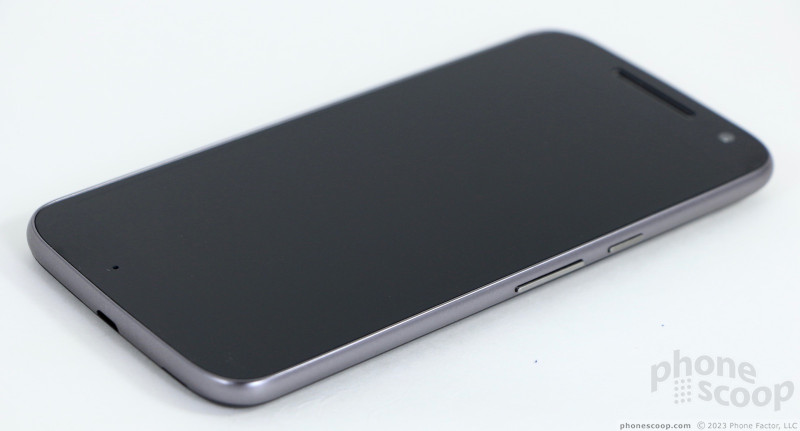














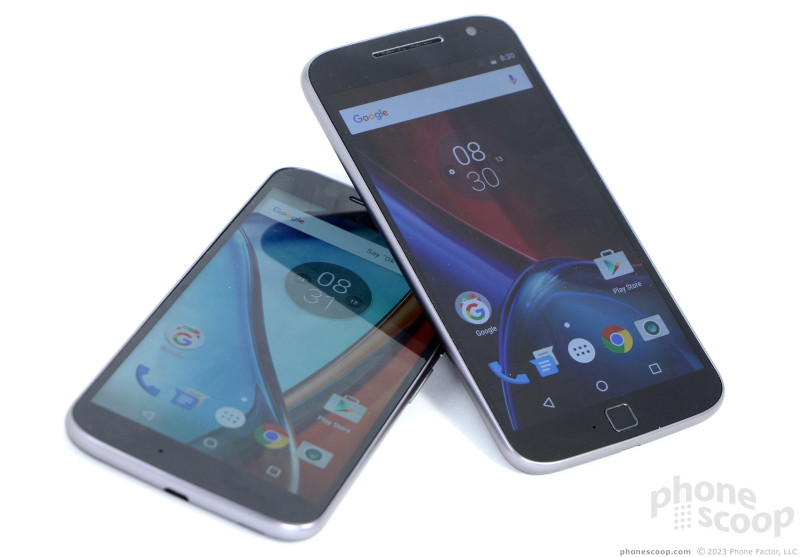



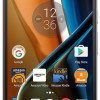 Amazon to Sell Discounted Unlocked Phones As Long As You Agree to Watch Ads
Amazon to Sell Discounted Unlocked Phones As Long As You Agree to Watch Ads
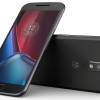 Motorola's Refreshed G Series Streets July 12
Motorola's Refreshed G Series Streets July 12
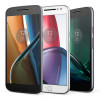 Fourth-Gen Moto G Comes In Three Varieties
Fourth-Gen Moto G Comes In Three Varieties
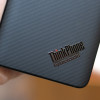 Hands On with the Lenovo ThinkPhone by Motorola
Hands On with the Lenovo ThinkPhone by Motorola
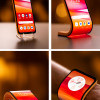 Motorola Shows Off New Concepts in AI, Foldables
Motorola Shows Off New Concepts in AI, Foldables
 Motorola Moto G4
Motorola Moto G4
 Motorola Moto G4 Plus
Motorola Moto G4 Plus




